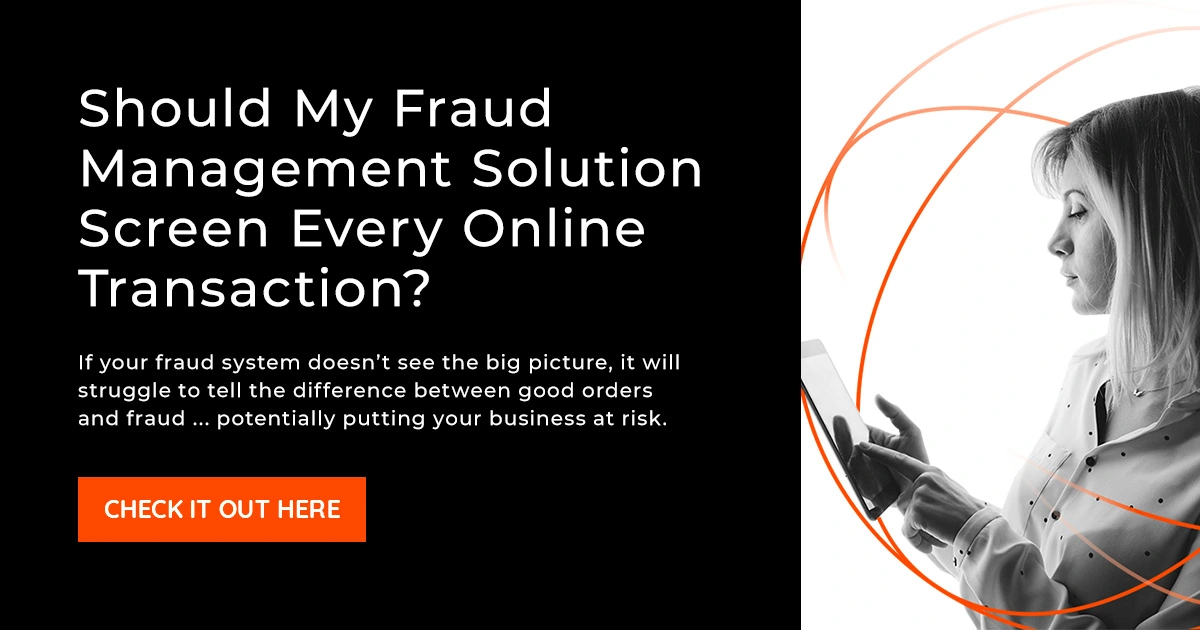Protecting Your Ecommerce Brand: Insights From MRC Vegas 2024
Fraud and brand protection are two of the hottest topics for ecommerce businesses today. It’s difficult to keep pace with the speed at which fraudsters can adapt and innovate new fraud tactics. Businesses need new information as soon as it’s available to maintain a balance between fraud protection and revenue generation.
At the recent four-day Merchant Risk Council (MRC) Vegas 2024 — the largest event in the world focusing on fraud prevention, payment processing, cybersecurity and more — ecommerce businesses benefitted from actionable ideas to prevent fraud and protect their brands. Here are the key takeaways.
Attendees at MRC Vegas had their pick of options, with 56 content sessions over four days focused on what’s new in fraud prevention and protection. And that doesn’t even include all the demos in the Exhibit Hall and roundtable discussions going on as well. Here is how the session topics broke out:
- 40% of the sessions were on overall best practices in fraud prevention. Not too surprising, given an audience of fraud managers and analysts.
- Payments were the topic of 25% of the sessions, with several discussions revolving around providing better payment experiences.
- The third most common topic was a surprise: case studies about the use of analytics and data science structures to address specific fraud scenarios. Several of the case studies featured organizations that have assembled cross-functional fraud teams from technology, product, analytics and marketing to tackle threats.
Roundtable discussions dove deeper into specific markets, emerging threats, industry advancements and more. Here are summaries of some of the standout topics.
Order Authorization Placement
Wish.com detailed their journey to removing all fraud prevention mechanisms, from post-authorization to pre-authorization, in favor of a combination of machine learning algorithms, dynamic rules and feedback from vendors.
This robust system offers Wish.com less complexity in managing rules and KPIs that are simpler to interpret — outcomes they hope will help improve their reputation with banks.
Implementation of this new system required revamping all existing algorithms and rules, and the company found that a simpler, less rule-intensive environment has lowered its fraud management costs and is producing decisions more quickly.
While still early days, the company’s results show a higher approval rate and a lower chargeback rate, as well as fewer fraud attempts. Wish.com is continuing to use control groups with a random sample of orders that are declined to test the accuracy and stability of the new system.
Emergence of Ecommerce Marketplaces
Forter, Seatgeek, and Ebay led a technical and analytical presentation about building a robust architecture to support sophisticated fraud programs. Ebay noted that they relied on logistic regression for fraud modeling until 2016, and that they understand that approach to be “stone age” now.
The team explained how their architecture uses machine learning, as well as strategies that adapt depending on the type of customer (new customers, risky customers, known customers, resellers, etc.) to boost results. For example:
- The platform was built around the idea of collecting and making use of all the data they have.
- They use automated machine learning to frequently calibrate and deploy models, ensuring the stability of the platform.
- False positives are measured through group control.
Ebay continues to use vendors in situations in which their data doesn’t allow them to make a good decision. As robust as their fraud platform is, this will always be part of their strategy.
The Impact of Geopolitical Factors on Retail
Kelley Knutson, CEO & Founder of Future of Payments LLC, presented the “Navigating the Global Payments Ecosystem” keynote.
Knutson shared his observations on the subject of retail. Overall, he advised that attendees should “Brace ourselves for a little volatility and uncertainty.” Here are his reasons:
- Election year uncertainty.
- No one can predict the outcome of the presidential election, but he advises retailers to pay more attention to which parties will control the houses of Congress.
- AI deepfakes will be used to attempt to influence the election.
- Studies show that retail grows less in election years.
- The Fed’s timetable for lowering interest rates is still unclear. While lower rates are expected, there’s no hard timetable for how fast and by how much.
- The contretemps between the United States and China over TikTok may be cause for concern. Should TikTok be banned or forced to be sold to a U.S. operator, China may impose heavy economic sanctions on the United States, creating a volatile economic scenario.
- The wars between Ukraine and Russia, and in Israel, are also concerns should they impact importation or exportation.
Global Fraud Payments Survey Results
The Merchant Risk Council, along with Visa Acceptance Solutions and Verifi, annually surveys merchants of all sizes from around the world on current payment acceptance and fraud trends. A preview of the 2024 Global Fraud and Payments Report was made available to attendees during a session.
The report notes how perspectives have changed since the first edition of the report 25 years ago. At that time (1999), fraud was an unknown factor. Today, it is properly interpreted as an unavoidable cost of doing business. These are some highlights from the report:
- Buy Now, Pay Later (BNPL) continues to grow as a payment option, with 60% of the merchants surveyed reporting it is one of the three most-used payment methods. However, most agree the bubble will burst at some point due to defaults.
- Using multiple providers for payment processing is becoming more prevalent, as merchants want to increase authorization rates while providing a better customer experience.
- Refund fraud/abuse is now the primary concern for North American merchants, and card testing is the primary concern for Latin American merchants.
- Merchants say their losses from refunds are up to 3x more than their losses from chargebacks.
- Most merchants report their intention to spend more on fraud prevention and protection (both technology and people) over the next three years.
Businesses Struggle to Distinguish Resellers From Fraudsters
Understanding the behaviors of resellers and fraudsters is a mission-critical necessity for retailers. Businesses struggle to distinguish resellers from fraudsters due to common attributes.
In this session, conducted by On Sports and Radial, presenters shared some of the factors that make it hard to tell them apart and some tell-tale differences, such as:
- Both use freight forwarders.
- Resellers tend to prefer Buy Online, Pick-up In Store.
- Resellers manipulate addresses to bypass order velocity checks.
The presenters explained that understanding and customizing their fraud system so as not to penalize resellers was a necessary step, and it continues to be a work in progress. They also recommend that merchants and providers share this kind of data in a consortium to increase capabilities universally.
One strategy that On Sports is using is a sales channel specifically focused on resellers.
The Rise in Refund Fraud
Refund fraud is the newest and fastest-growing fraud trend in ecommerce. According to some sources, merchants are losing three times more revenue to this type of fraud than to actual credit card fraud.
However, due to the lack of visibility, lack of tracking and the fact that most of these losses are written off as a cost of doing business, this type of fraud can go, and it is going, unnoticed for a long period of time.
The session, Refund Fraud – Fraud as a Service – Have We Created a Monster? conducted by Appriss Retail + Lowe’s, discussed trends in this type of fraud: There have been several reports indicating there is such a thing as “refund as a service.” People will teach you which websites to target in order to profit from refund fraud.
- Fraudsters are actively seeking in-house collaborators among people working for merchants.
- Returning fake products has been a common tactic in the fashion industry.
The presenters also offered up strategies merchants are using to combat this type of fraud:
- For merchants that also have a brick-and-mortar presence, Buy Online, Return in Store has been a good practice, although it is an inconvenience to legitimate customers.
- Merchants also report they are now monitoring social media apps Telegram and WhatsApp to learn if fraudsters are discussing their store’s vulnerabilities in these forums.
- They recommend sharing data across channels so the team handling refunds has access to fraud trends and insights.
- Know when to create friction in the return process, such as by requiring return-in-store.
- Never issue a refund before you know the product was properly delivered.
Digital Brand Protection
The ClearSale team, represented by Rafael Lourenco and Estee Lauder’s Blake Morrow, delivered their best advice on digital brand protection. Specifically, they focused on fostering collaboration and data-driven decisions, as well as delivering exceptional customer experiences.
Watch the video of this presentation, and contact the fraud analysts at ClearSale to find out how we can help you protect your brand and fight fraud.
 Rick Sunzeri
Rick Sunzeri
